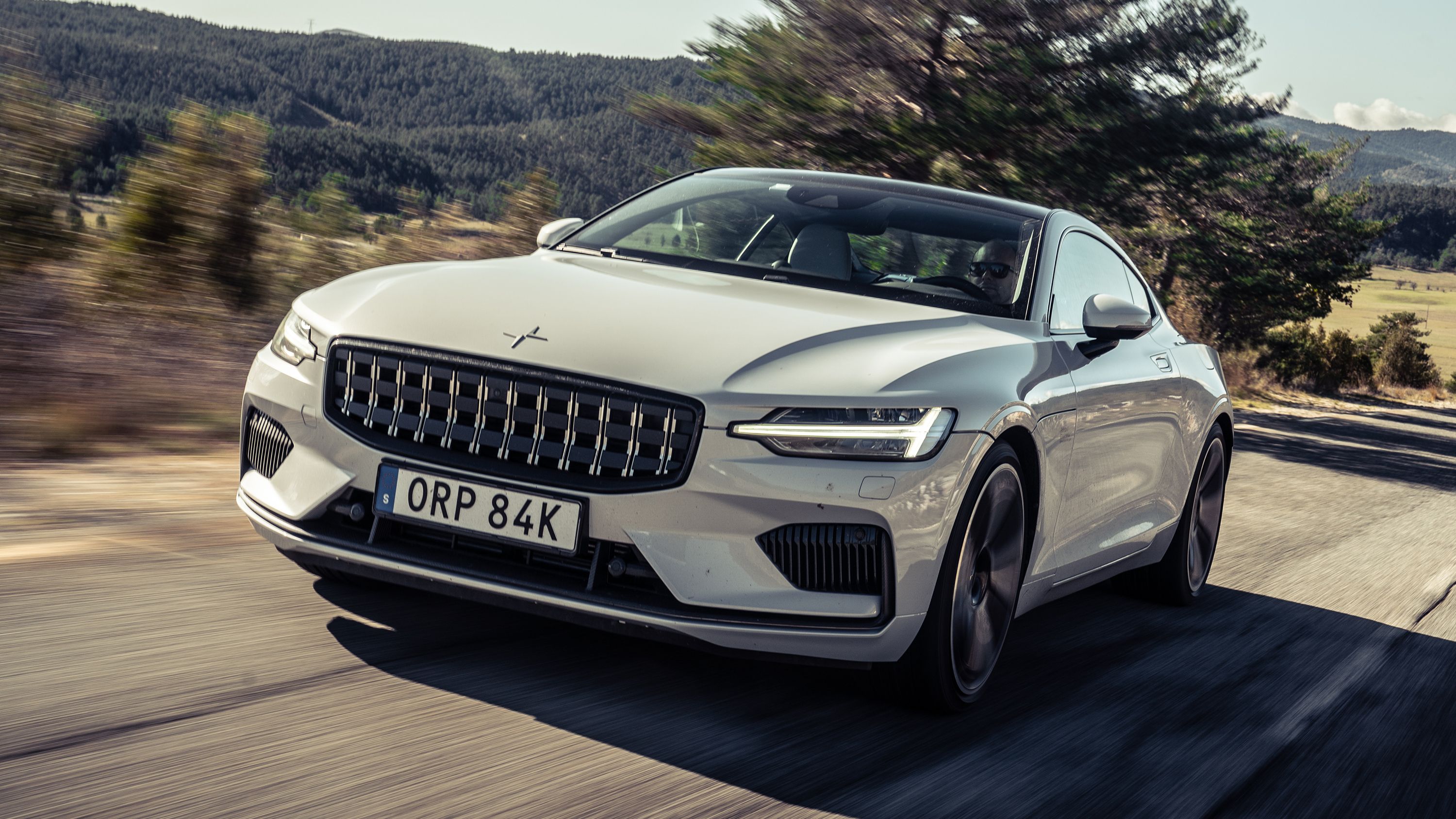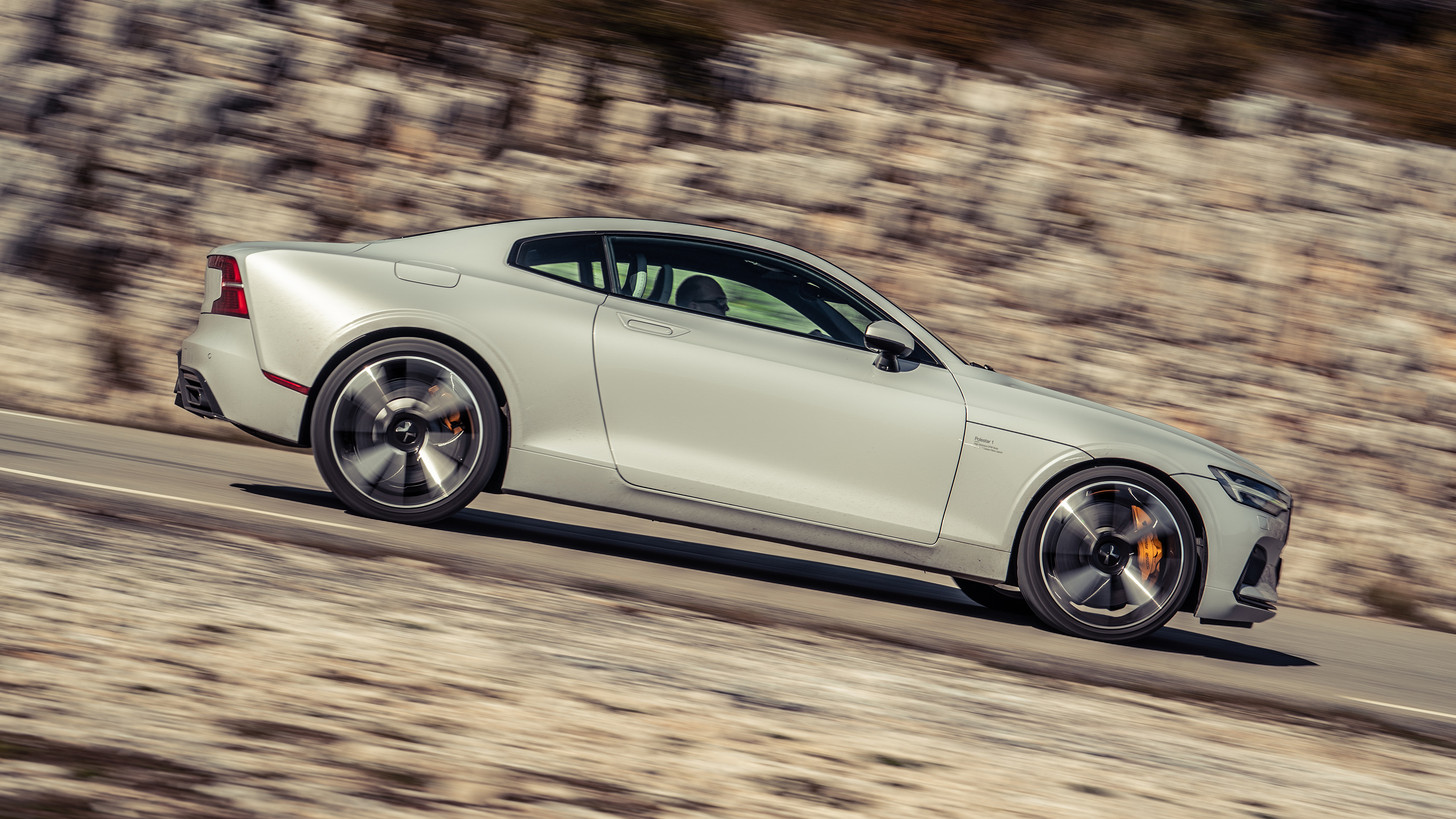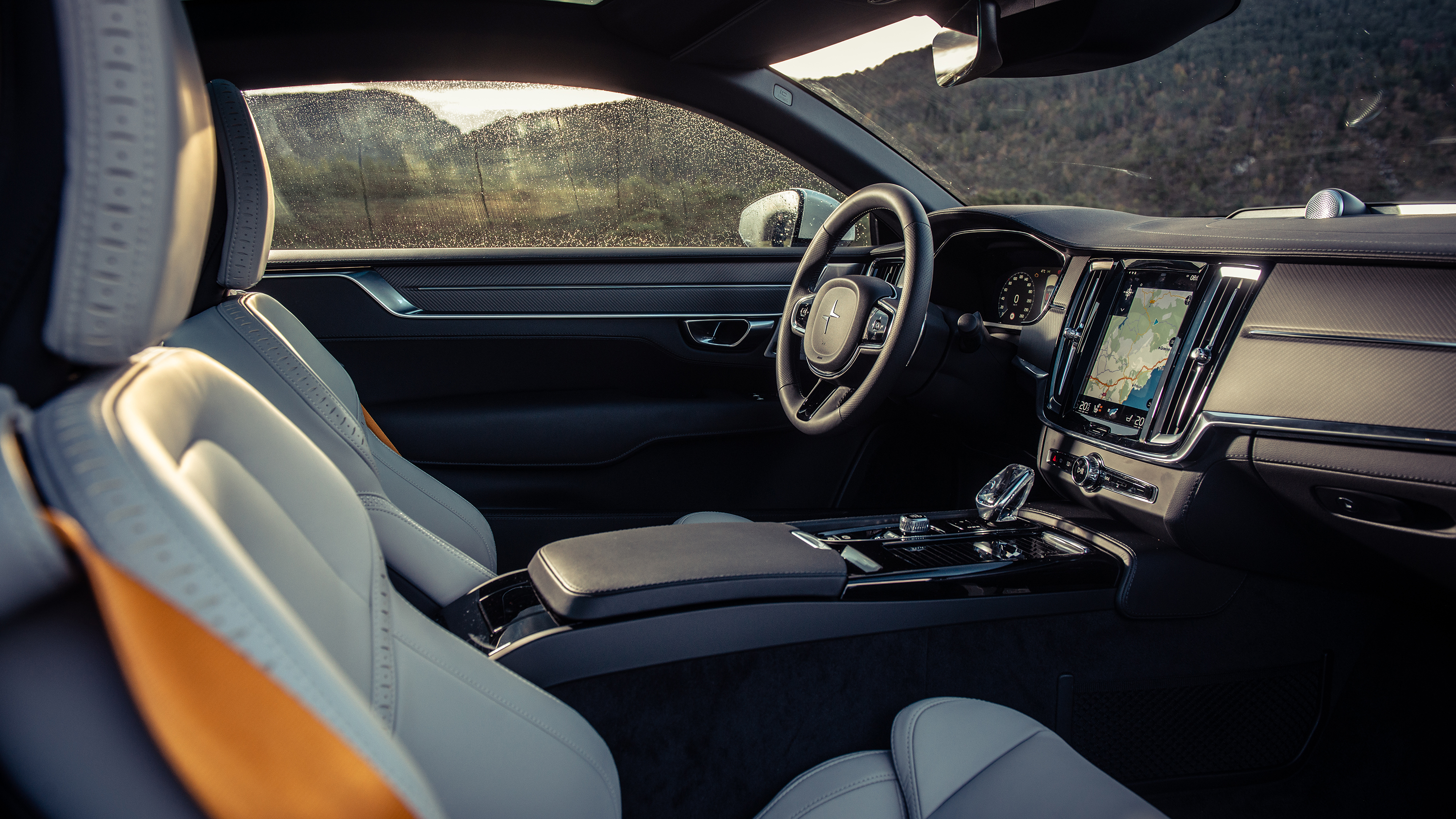
Polestar 1 review
Driving
What is it like to drive?
The brief of a GT car is to be easy-going, placid transport. The sort of thing you can just climb into and, 500 miles later, feel like no time has passed. The Polestar 1 – on first impression – isn’t the car for that job, with a bewildering number of driving modes to choose from depending on how much hybridisation you want. And that’s before you get to its dampers which adjust through 22 clicks.
But then if you just leave it in hybrid mode and drive without any real vigour it’s as effortless as cars get. It’s easier to see out of than many of its rivals – that saloon car-esque shape helps – and everything is just so smooth. Alright, the ride’s a little firm, but then it is on Volvos and, as we’ll get to, it’s something you can adjust if you have the inclination.
You can drive it in electric-only 'Pure' mode and you have a 93mph maximum and good acceleration. We know this because we pulled on to a motorway thinking I was in 'Hybrid' mode and enjoying the power, only to realise there was no engine noise. Bring the turbo- and supercharged engine to life by switching to either 'Hybrid' or 'Power' via a rotary controller on the console and this is a deeply rapid car. Not quite Tesla fast, but good for a 0-62mph time of four seconds or so.
The engine doesn’t sound as interesting as you might hope, but stick it in a high gear at low revs and you get a good bassy grumble – and far more performance than you were expecting as the electric motors give their all immediately. The gearbox, an eight-speed automatic, is vice-free and well0integrated into the drivetrain.
But it’s the balance of this performance that’s most impressive. Here is a hybrid that’s not dominated by electric or petrol alone, but instead hits a happier medium – there’s plenty of action on offer from both (and enough range to make electric only commuting entirely viable).
Better yet, the torque vectoring is really noticeable, helping mitigate the effects of all that power going through the front wheels. Hit the power mid-corner and rather than understeer, the electric motors apportion their torque, sending more to the outside rear, less to the inside and managing the traction so the car feels far more neutral. You’re going very fast before understeer gets a look in. In fact, you can actually detect the outside wheel over-speeding, using its force to help rotate the car inwards. It’s an interesting sensation.
So, those dampers. You could, if you so desired, soften off the front completely, and stiffen up the rear, just to see what happens. As standard it ships with the dampers set 9 at the front, 10 at the back, with suggestions in the owner’s manual for how you might like to run it softer or harder. But still: manual dampers. And while you adjust the fronts on the damper turrets under the bonnet, to get to the rears you either need pipe cleaner arms to reach around the back of the wheels, or a trolley jack.
Not only is this not exactly practical, but who the hell is going to bother? The Polestar 1 is a luxury GT, the embodiment of effortless motoring. So why not give it dampers that can be adjusted at the press of a button inside? We suspect it’s been done as a talking point, something to set the 1 apart. They’re made by Öhlins, long-time Polestar racing collaborator, and I suspect these are very, very expensive. Two reasons: first, Volvo has chosen to decorate the brake calipers, seatbelts and dust caps in the same famous Ohlins gold colour and second, what they do to the car is genuinely impressive.
It’s the comfort/control bandwidth the car has that’s downright amazing. It does roll a little, but its roll that telegraphs what the car is up to, how hard it’s having to work. It compresses progressively, rebounds equally smoothly and maintains body control so well you’d never guess the 1 weighed anything like 2.35 tonnes. Joachim Rydholm, its chief development engineer, reckons he’s tested around 80 separate front damper tunes and 115 rear over the last two years. And yes, he had to tune the dampers in every single one of their 22 settings.
His hard work means the 1 behaves differently to anything else in its class. It’s more connected than most GTs, without being hard. It’s not cossetting, though. The Polestar doesn’t sigh along like a Bentley, inhaling and exhaling deep whooshes of air. This is a tenser, more tightly controlled intake and release, there’s less travel in the suspension. More like that BMW 8-Series, but somehow gentler, less rigid in its actions.
What we’re dealing with here is a different way of doing a GT. It’s more active, alert and involving than something like a Continental GT, but still more traditional in its remit than the more overly sporting McLaren GT which costs a little more. The Polestar 1 treads an interesting line between the two, with a side order of intrigue courtesy of its electrified powertrain. It’s pricy, but there’s nothing quite like it.
Featured







